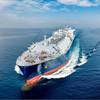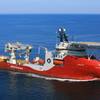The United States Coast Guard announces the switch to new command, control and communications technology monitoring distress calls throughout Puget Sound, the Strait of Juan de Fuca, and the West Coast of Washington, north of the Quinault Indian Reservation. Rescue 21 allows the Coast Guard to monitors Digital Selective Calling (DSC) emergency transmissions. When properly registered with a Maritime Mobile Service Identity (MMSI) number and interfaced with a GPS receiver, a DSC distress call provides the Coast Guard a vessel's identity and exact location, greatly improving emergency response. Rescue 21 also includes advanced direction-finding capability, allowing Coast Guard watchstanders to more accurately locate the source of a VHF distress call. That capability also helps the Coast Guard locate the source of hoax calls, saving valuable time when lives are at stake and conserving taxpayer dollars. Rescue 21 has enhanced playback capability to bolster the chances of deciphering garbled messages, and a network of radio towers to help reduce coverage gaps in coastal areas. Both ensure more distress calls get through to the Coast Guard.
Proving its mettle following Hurricanes Katrina and Rita, the Disaster Recovery System (DRS) is another vital component of Rescue 21. A fully autonomous, rapidly deployable emergency communications package, it provides voice and data connectivity if a manmade or natural disaster destroys the existing communications infrastructure. A $730 million acquisition project and the second largest within the Coast Guard, Rescue 21 will replace the Coast Guard's aging National Distress and Response System, built three decades ago. Once fully implemented, the technology will cover 95,000 miles of U.S. coastline and inland waterways.
Sponsored Content
Experience Custom Yacht Signs and Designs Tailored to Perfection!

April 2025
 Read the Magazine
Read the Magazine

 Read the Magazine
Read the Magazine
This issue sponsored by:

From Oil to Wind: Cross-Skill Pilot Exemplifies Just-Transition in Action
Subscribe for
Maritime Reporter E-News
Maritime Reporter E-News is the maritime industry's largest circulation and most authoritative ENews Service, delivered to your Email five times per week








